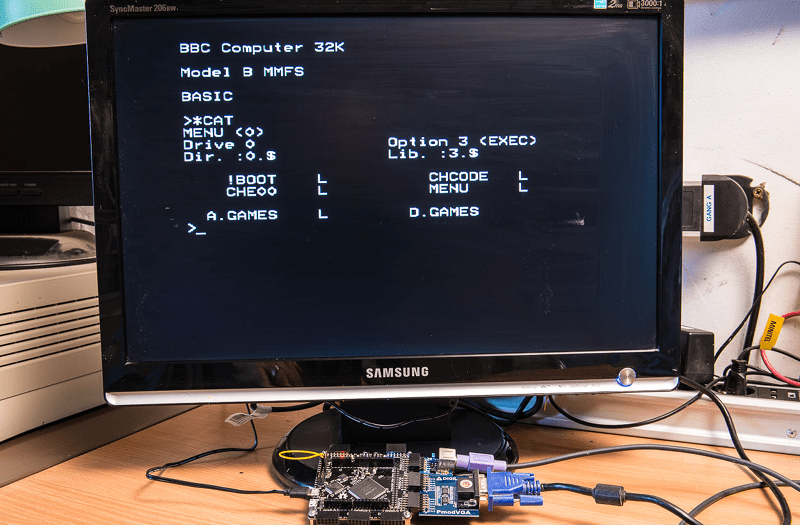You can look at pictures and video of the Grand Canyon, Paris, New York City or anywhere else, and yet when you finally see those places with your own eyes it is somehow different. Fielding an old computer like the BBC Micro on an FPGA has been done before. But there’s always something to learn when you do it yourself. [Machina] took a BlackIce board and made a BBC Micro replica, but he learned a few things along the way and decided to share them for our benefit.
He used the BlackIce board with [Dave’s] BBC Micro implementation that we’ve covered before. [Machina] was impressed that the board takes PMOD plug ins, so it was easy — almost — to add a VGA and keyboard port. Although both gave him some unexpected problems.
The keyboard was intermittent, perhaps because of the FPGA’s 3.3V interface. The VGA adapter however, put out a 50 Hz refresh rate. Apparently most modern LCD panels don’t expect that, and only one monitor that [Machina] tried was able to sync up. Granted, it seems a shame to run these old computers on flat monitors, but desk space, cost, power consumption, and domestic tranquility make it very appealing to go ahead and use a flat panel. Perhaps someone will offer a cardboard CRT-emulator that tapes to the back of a modern LCD monitor.
We are suckers for old hardware, rebuilt old hardware, and even simulated old hardware. If you want to get your fix of retrocomputing with no real effort, you can always surf the web.
















I tried it , is a very nice implementation, there is a RGB Scart version for PAL people as well.
oh, well, that’s fun , I’m the one that proposed to use the level shifter in the mystorm forum…
Tehe cardboard CRT emulator. Who ever thought that one up, give them a cookie. (:
Like those old cardboard boxes they used to use in furniture stores to “demo” having a computer sitting on your new desk! I always wanted a set of those fake computer props.